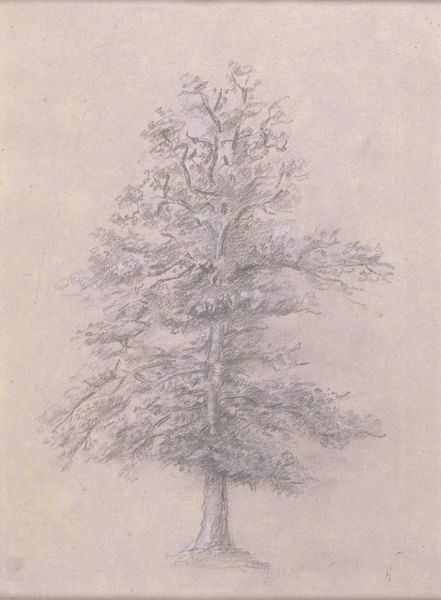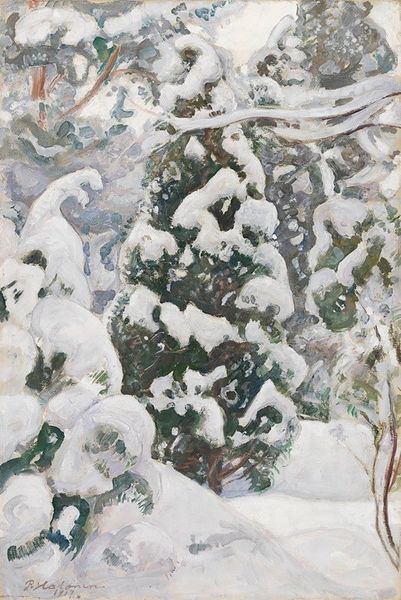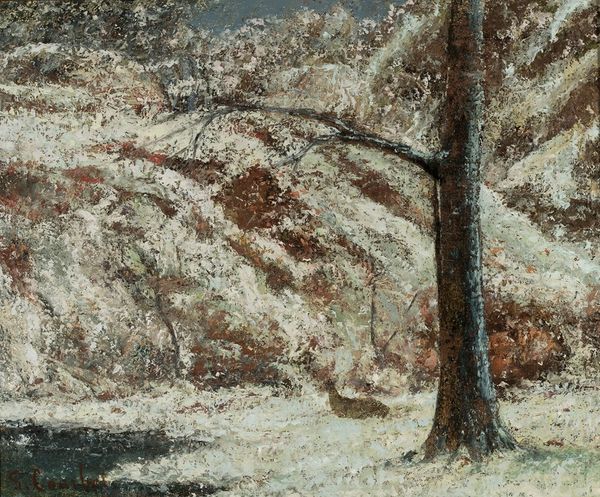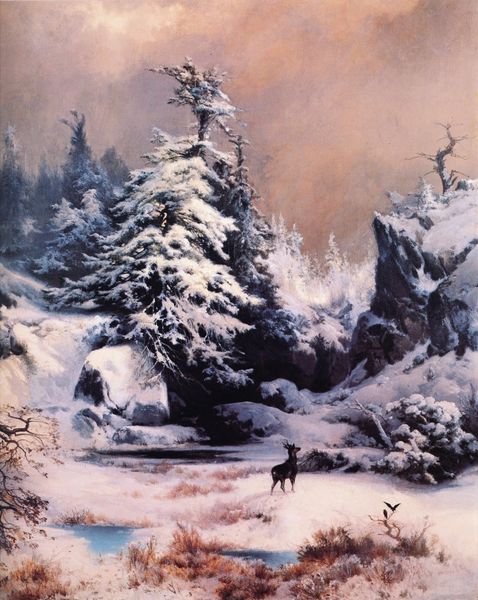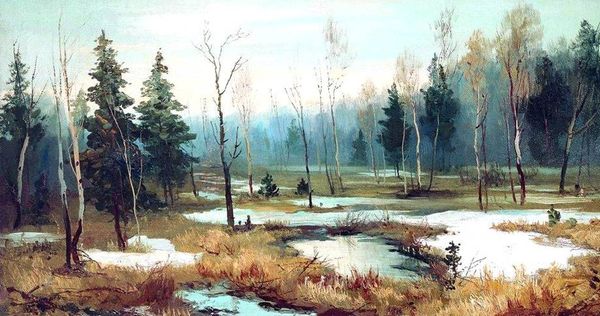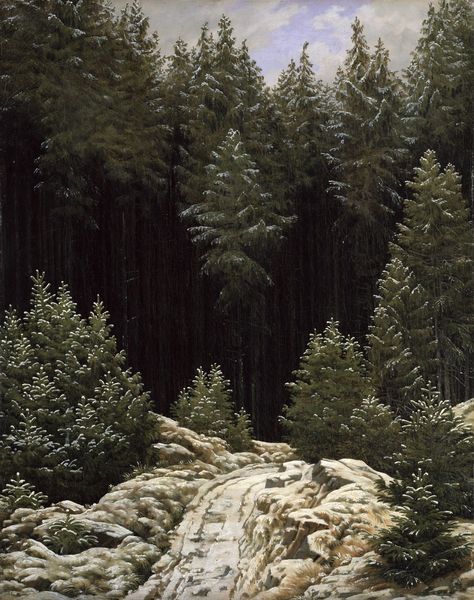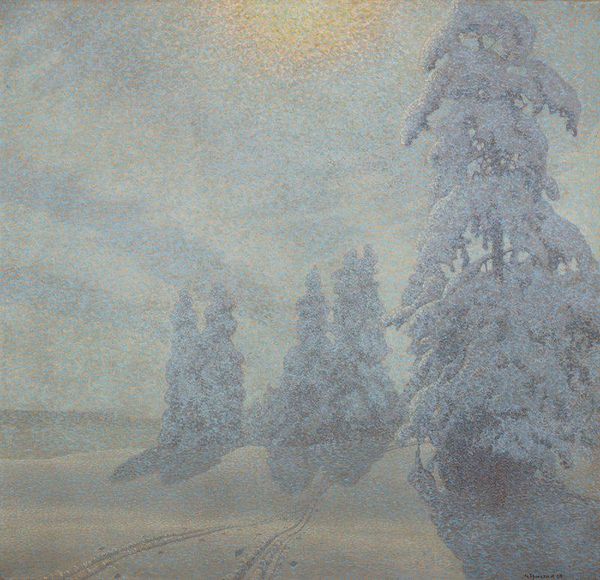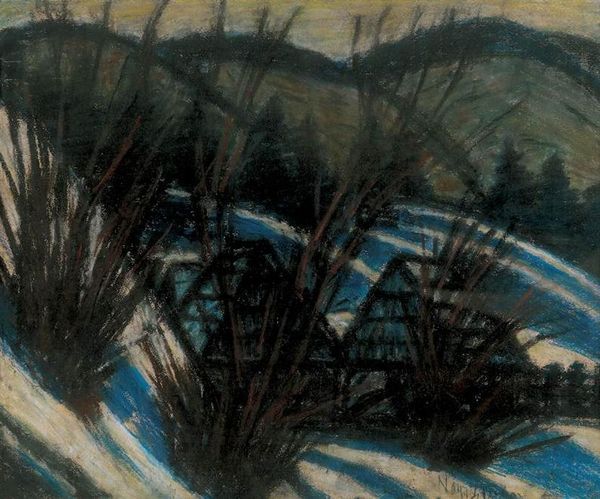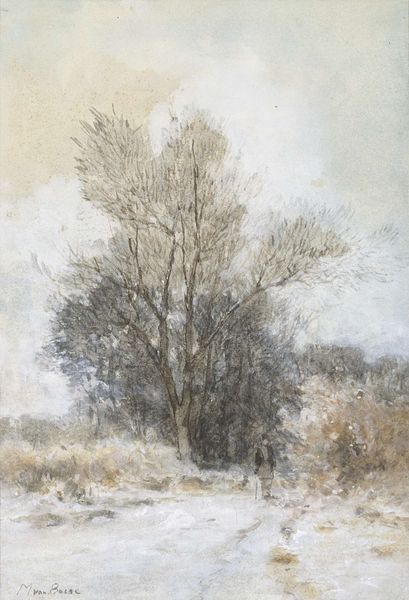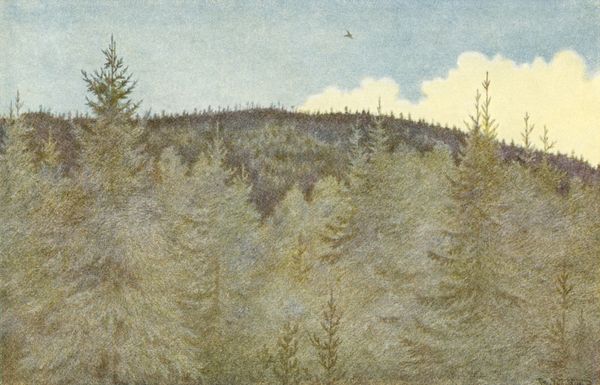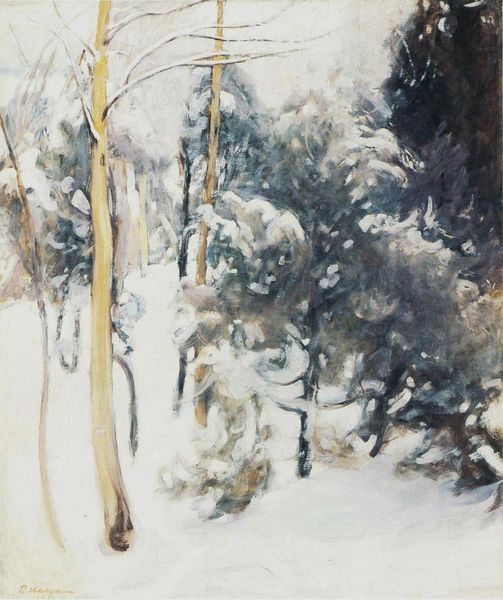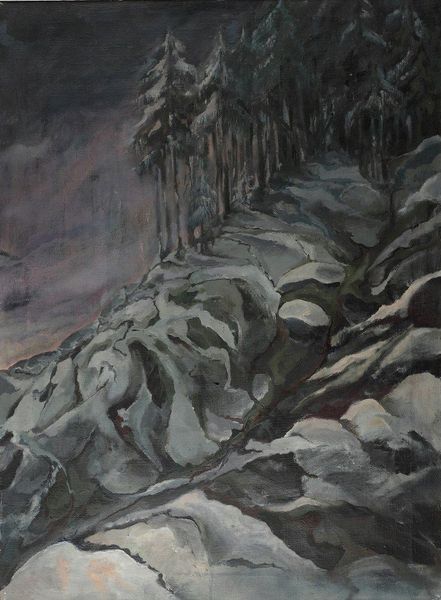
painting, oil-paint
#
tree
#
snow
#
painting
#
oil-paint
#
landscape
#
winter
#
figuration
#
nature
#
oil painting
#
romanticism
#
realism
Dimensions: 31.24 x 25.4 cm
Copyright: Public domain
Curator: Caspar David Friedrich’s “Fir Trees in the Snow,” painted in 1828, invites us to contemplate a winter landscape rendered in oil on canvas. It’s held here in the Neue Pinakothek in Munich. Editor: Instantly, I'm struck by how this scene evokes both stark isolation and a quiet, almost reverent stillness. The somber light feels significant. Curator: Notice how Friedrich meticulously layers the paint, building up texture to mimic the heavy snow clinging to the fir branches. You can almost feel the damp chill of the winter air and see the craft put into this recreation. This wasn’t just observation, but active manipulation of the materials to convey an experience. Editor: The fir trees themselves are potent symbols, though. Throughout different cultures, they've been emblems of resilience, eternal life, and even hope during dark winters. They reach toward the heavens, a connection to the spiritual realm, blanketed with a purifying, transformative element. The contrast between that aspiration and the grounded, material snow creates tension. Curator: And think about the socioeconomic factors. Friedrich's landscapes were created for a burgeoning middle class, hungry for images of unspoiled nature, even as industrialization threatened those very spaces. He wasn't just depicting pretty scenery, he was participating in a discourse around land, labor, and leisure. Editor: Perhaps, but there's an undeniable emphasis on the individual's relationship to the sublime, vast, and indifferent force of nature. This goes beyond pure realism; these trees could suggest faith enduring despite an overwhelming earthly burden. Each branch weighted down… Curator: It's all meticulously composed and rendered; it serves the artist's narrative. These elements become commodities themselves when viewed through the gallery's perspective, transformed from mere elements to symbols of status and taste. Editor: Fair point. Ultimately, however you choose to interpret it, there's a contemplative invitation present within the canvas; it leaves a lasting impact. Curator: Exactly, understanding the artist's intent with available resources provides greater appreciation and comprehension when consuming the artistic expression.
Comments
No comments
Be the first to comment and join the conversation on the ultimate creative platform.
